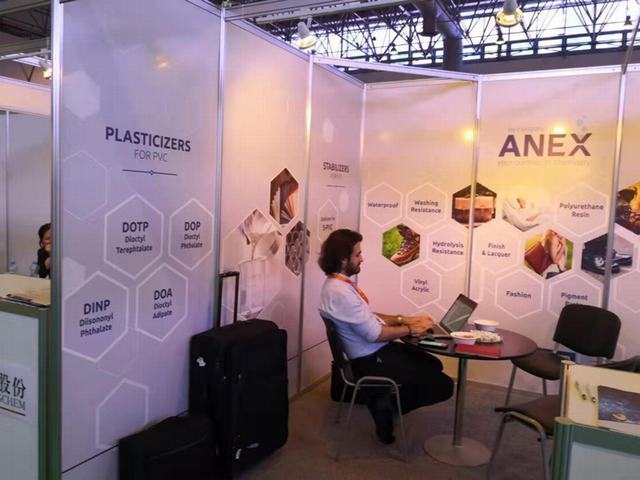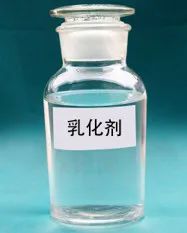Determine the foaming system: 141B or cyclopentane. Predetermination of the range of water volume/physical foaming dose 2. First, clarify the process details of the target production line: foaming machine type, perfusion flow, temperature control value before perfusion, kang channel insulation temperature control value and insulation time, box filling port location Which and the process of mold closing and hole sealing after the foam material flows through the route and is poured. 3. Current (working) environment temperature and humidity changes. 4. Ask the on-site operators and quality inspectors about the defects of the current process and raw materials, and ask them to put forward any other specific requirements
Specific tests
1. Compatibility: ①Add a short glass rod to a 100ml small beaker, return it to zero, pour in the main polyether (polyester) one by one, stir well and check whether it is transparent. ②Add silicone oil, catalyst and water, stir well and check whether it is transparent. ③Add physical foaming agent and mix well to see if it is transparent (note that the physical foaming agent that volatilizes after stirring must be replaced). ④ The pre-prepared composite material samples should be stored for at least 3 days to be transparent and non-stratified. ⑤ Store the combined material samples at 35 and 15°C for 24 hours respectively to see if they are transparent. ⑥ If possible, you need to measure the viscosity of the combined material in the design (25°C and the temperature under normal production conditions) to see if the viscosity changes significantly with temperature. amplitude fluctuations.

2. Anti-shrinkage: Cut the free-foamed sample into a regular square shape after 1 hour. Measure the fixed edge size and place it in a -20°C freezer for 24 hours to check the size changes. Linear shrinkage within 2% is acceptable
3. Free foaming: Perform free foaming according to the designed black and white material ratio and temperature control, paying attention to material speed, core density and drawing marks.
4. Fluidity: After the free bubble density and speed are determined, a fluidity test must be carried out. The simple method is: mix a certain amount of foaming material (usually 200g) and immediately put a slightly larger long plastic bag on the mouth of the foaming cup, straighten it vertically and let the foaming material grow upward until it is finalized (two people are required to operate it) ). The ratio of the height L from the cup mouth to the top and the material weight G will be used as an important parameter to evaluate the fluidity of the combined material. The larger the L/G, the better the fluidity. After that, the core density will be measured in sections as an auxiliary reference (since The density difference from low to high cannot be too large, otherwise the fluidity cannot be considered good, especially at the highest point.) In fact, if you do too many experiments, you can look at the shape of the remaining foam in the cup during normal free foaming. Roughly judge the quality of fluidity: the more it resembles a mushroom after being taken out of the cup, the better; the more it resembles a straight stick, the worse it is.

5. Tolerance of process conditions: ① Carry out foaming with preset temperature control of +3 and -3℃ to see if good fluidity and cell structure are still maintained (the foaming of “fast material” and “slow material” The gap between the holes should not be too large) ② Carry out a free foaming test with a constant amount of white material and +10% and -10% of black material. If the foam body does not shrink significantly for 30 minutes at room temperature, it is considered passable.
[Trial Production] “Refrigerator, Freezer” category
This is simple. The entire barrel of material is put into the machine for trial production and produced according to the predetermined (or actually implemented) process conditions. The finished product is installed in the machine and cooled to see the shrinkage and insulation of the box. General procedure: The finished foam body in the trial production box must be sampled and tested for comprehensive data such as thermal conductivity. What generally needs to be fine-tuned on-site is: foaming material temperature control, black and white material ratio, adding catalyst, and aging temperature adjustment

Combined materials/process control of imitation wood products (internal discussion board) [White material system requirements and product requirements]
1. White material viscosity: It involves the initial fluidity after discharging the gun (machine foaming type), mixing effect (including manual foaming type), as well as the flow rate of the gun and the ratio of black and white materials. In principle, it should not be high At 2000mPa.S (25℃, the same below), except for those with high density (free bubble density above 130kg/m3).
2. Compatibility: Unless the white material is prepared for immediate use or the whole barrel of white material is put into the machine while stirring, the white material should be homogeneous, transparent and non-stratified (if you choose silicone oil with a lower cloud point, the white material should be used at low temperature. It may also be opaque, but it cannot be layered), especially with handmade materials.
3. Fluidity: Generally, the fluidity requirements of imitation wood are not very high, which depends on the reasonable arrangement of its own production process. For specialChoose the appropriate model and use a reasonable amount.
3. Silicone oil: (1.5-2.5%)
This is based on other raw materials (raw material matching). General hard foam silicone oil can be used, but if you want to improve some properties of the product (fine cells, white lines, fluidity), you still need to spend more time. It’s best not to use those priced below 24 yuan/kg. Pay special attention to the fact that the silicone oil model may need to be changed after the main body of the polyether (ester) changes.
4. Catalyst: ① Preliminary type: ROAOCAT-A1, ROAOCAT-5 catalyst, whose function is to control the starting time, drive other catalysts to work, improve the cell density, and improve the fluidity of the foaming process. The dosage is within 0.5%, depending on the amount of “water”. It is best to be a “fixed amount” when the weather conditions are stable ② Stable type: ROAOCAT-8 Catalysts, dosage 0.3-0.6%, currently the most cost-effective hard foam catalyst, various issues Catalytic ability is average. ③Main catalyst: An essential catalyst in A-33 imitation wood, which directly affects the skinning effect and product hardness. The dosage is at least 0.4%. The A-33 here refers to solid amine (triethylenediamine) dissolved in small molecular glycol, not a commercially available sponge product (there are many counterfeit products). ④Organotin: ROAOCAT-D22 is the best. A very small amount (one ten thousandth) can significantly improve the skinning effect and shorten the mold opening time. What needs to be noted is: be careful about the storage period of the white material, because ordinary organic tin is a tin catalyst that is not resistant to hydrolysis and will gradually lose its effectiveness. Like D22, the signs of failure will be obvious after a week of being used in the composite material. It is recommended to use water-resistant catalysts. Solution type. ⑤Three-cluster: It is best to use ROAOCAT-41 (0.3-0.5%) to harden without affecting the cell structure. I have used DMP-30 at 0.5% for some time, but the effect was not very satisfactory. Dimethylethanolamine can also be used in small amounts. ⑥Other types: Dimethylbenzylamine (0.5%) is not good at improving product quality, unless it is used for decorative gussets with lower density, longer dimensions, and closed-mold infusion, which can improve the fluidity of the material. . ROAOCAT-112 catalyst can thicken the crust and increase foam hardness.
5. Foaming agent combination: Most of them are now 141B/water foaming system. The water content is 0.2-0.7%, and the ordinary imitation wood 141B should generally not exceed 10 parts. The amount of 141B used will directly affect the thickness and hardness of the crust. Using too much will also cause dark bubbles on the surface
6. Other additives to reduce viscosity, colorants, anti-yellowing, etc. You can add something non-reactive to reduce the viscosity of the white material, such as DBP or the like to 3%. Just add colorants, antioxidants, etc. directly, no need to worry.
7. Filling This is only for manual foaming. You can add inert fine powder to enhance rigidity. Note: Do not add anything with too high water content.